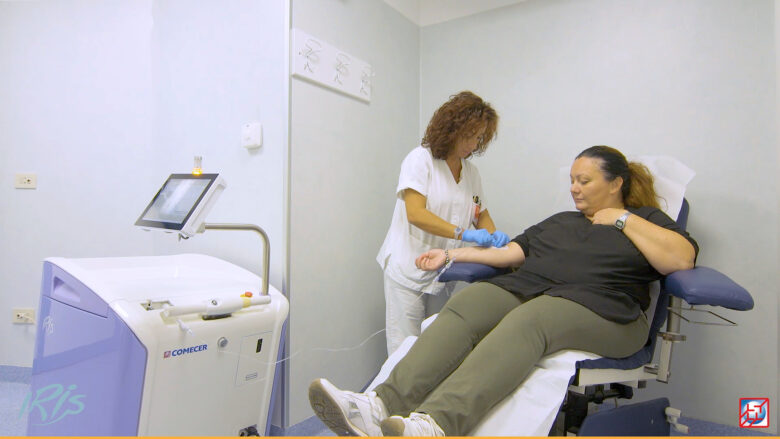
Customer
National Cancer Institute IRCCS G. Pascale Foundation | Napoli, Italy
Executive Summary
Applications involving PET and PET/CT significantly expose staff members. Compared to SPECT applications, dosages for the whole body and extremities are often higher per procedure. Even when heavy syringe guards are used, dispensing individual patient doses and manual injections involve high doses to the extremities. Many PET centers use individual workload optimization to limit staff doses, but more optimization is often required to reduce staff doses to a manageable and safe level.
IRIS is mainly used to inject PET radiopharmaceuticals but recently also therapeutics. With the latest version of IRIS software introducing the MULTISTROKE, it is finally possible to use it, as certified medical device, for the injection of therapeutic radiopharmaceuticals, also if they are in large volumes.
Nowadays, the most employed radiopharmaceuticals are those labeled with Lutetium-177 [177Lu] for Radio Ligand Therapy (RLT): [177Lu]Lu- DOTATATE (LUTATHERA®) and [177Lu]Lu- PSMA-617, (PluvictoTM).
Challenges
Before the authorization and introduction of IRIS all doses for RLT were manually injected or using home-made devices with significant doses to all operators.
Every single step was risky, from moving the bulk vial within the hot room (where operators prepared every single-dose for each patients) to measuring the activity to administer. Even though all the steps were performed inside the hot cells, the doses to the operators’ hands were very high.
By introducing IRIS the majority of manual steps were completely skipped with a drastic reduction of the exposure to the hands, as well as to the body.
By using IRIS the operator only has to place the shielding container of the bulk vials in the correct position; all operations such as measuring the activity to be injected, the injection itself and the management of the radioactivity are completely bypassed and performed automatically by the system.
Customer quote
Interview with Dr. Secondo Lastoria (Chief of Nuclear Medicine Department – National Cancer Institute IRCCS “G. Pascale” – Naples)
How the Nuclear Medicine Department is structured regarding equipment and workflow?
We have a Nuclear Medicine facility that includes two cyclotrons, 2 radiopharmacies, 2 PET/CT, and 3 SPECT/CT for diagnostic examinations. Furthermore, we have a protected area with 7 beds for metabolic radiotherapy with radionuclides. Let’s say that is comprehensive Nuclear Medicine Department.
Why did you purchase two IRIS and for what are you using them now?
The choice was due to the need to reduce the exposure of personnel for diagnostic purposes; mainly PET examinations with [18F]-FDG, [18F]-PSMA and secondly for metabolic radiotherapy. In our department we are using [177Lu]Lu-DOTATATE and [177Lu]Lu-PSMA-617 for patients with solid cancer, in order to reduce of exposure of nurses during infusion procedures we selected this option and we acquired the devices.
This is the first Hospital in Italy to inject Lutetium with IRIS; what about your experience?
We are satisfied with our experience and we are also monitoring the exposure rate of the personnel involved and using this new procedure. The main result that I can share with you is that if you were performing 177Lu DOTA peptide in a normal infusion set, there is an exposure rate of up to 17 µSv/h, so it’s significantly higher, instead using the IRIS device, we had a decrease up to 9 µSv/h. This is just the result of a set of infusions, of course we have to be far from the patient though we are monitoring the patient and the fate of the injection and so this is an important decrease in the rate of exposure of personnel.
Usually how many patients do you inject with IRIS with both F18-FDG or Lutathera?
The number of patients who are submitted to PET/CT scans is significantly higher than those who are enrolled for radioligand therapy. In order to give numbers, the mean number of PET/CT per day in our Institution is 30 cases, so if you consider a mean injection of 7 mCi for each of them is a significantly high activity that every day is manipulated and administered to the patients.
Regarding the radio ligand therapy numbers are quite different and usually we can have between 2 and 5 patients per week that are normally triggered for cancer treatment procedures.
Location: Napoli
Category: Radiopharma










